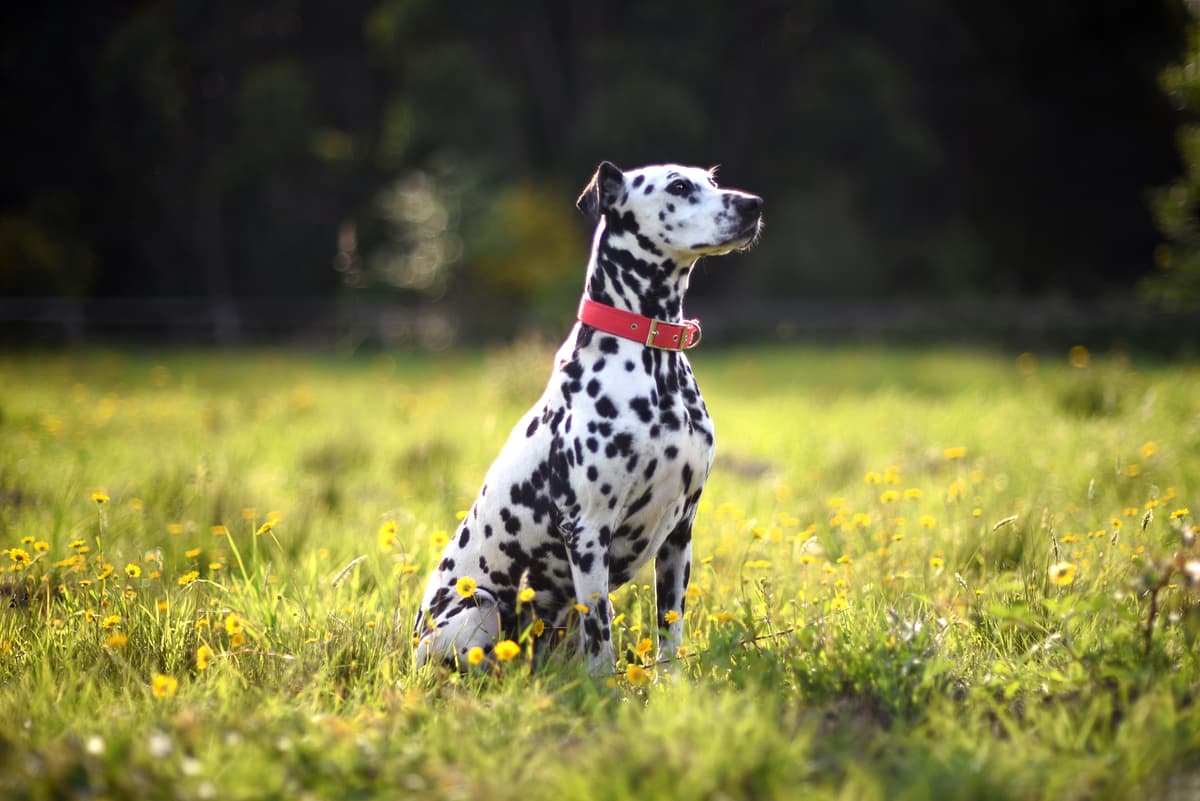Dalmatian vs Labrador Retriever
Discover the differences between Dalmatian and Labrador Retriever to make the best choice for your situation.
Try different breeds

Dalmatian
Distinctive spots and high energy make this outgoing breed unforgettable. Loyal and spirited, a Dalmatian thrives as an active companion and family friend.

Labrador Retriever
Eager, friendly, and intelligent, this breed loves being part of an active family. Their gentle nature and loyalty make them outstanding companions for all ages.
Quick comparison
Medium
27–32 kg
Short, dense
11–13 years
24–29 kg
High energy
Large
29–36 kg
Short double coat, water-resistant
10–12 years
25–32 kg
High energy
Personality & behavior
Compare the personality traits and behavioral characteristics of both breeds.
Dalmatian
Outgoing with people and other pets
Quick learner who enjoys mental challenges
Needs vigorous daily activity and exercise
Loves interactive games and family fun
May struggle with major changes in routine
Labrador Retriever
Warm and sociable with people and animals
Quick learner, responds well to training
High stamina, enjoys active pursuits daily
Loves games and interactive activities
Adjusts easily to new situations and environments
Care needs
Exercise, grooming, and daily care requirements
Dalmatian
Deafness, urinary stones
Labrador Retriever
Hip dysplasia, elbow dysplasia
Suitability
How well each breed fits different living situations and families
Dalmatian
Needs experience
Dalmatians require consistent training and can be stubborn for novice owners
Not ideal
High energy and vocal nature make them challenging for apartment life
Perfect fit
Their stamina and enthusiasm suit very active families or individuals
Playful companion
Friendly but may be too boisterous for small children without supervision
Mixed results
May get along with other pets if socialized early, but strong prey drive exists
Prone to anxiety
They dislike being left alone and may develop destructive behaviors
Labrador Retriever
Great choice
Patient and eager to please, Labradors are manageable for most first-time owners.
Not ideal
Labradors need space and exercise, so apartments can limit their activity needs.
Perfect fit
High energy and stamina make them excellent for active individuals or families.
Highly suitable
Gentle temperament and playful nature make them safe and loving with young children.
Very friendly
Generally sociable and get along well with other dogs and pets.
Prone to anxiety
Extended alone time can lead to boredom and destructive behaviors in this breed.
Breed strengths
What each breed excels at and their best qualities
Dalmatian
- High endurance and athleticism
- Loyal and devoted to family
- Strong watchdog instincts
- Intelligent and quick to learn
- Distinctive and attractive coat pattern
Labrador Retriever
- Friendly and sociable with people and dogs
- Highly trainable and eager to please
- Excellent with children and families
- Strong retrieving and swimming abilities
- Generally adaptable to various living situations
Challenges & considerations
Potential challenges and considerations for each breed
Dalmatian
- Prone to deafness and urinary stones
- Can be overly energetic indoors
- Needs extensive daily exercise
- May be reserved with strangers
- Tendency toward stubborn or independent behavior
Labrador Retriever
- Prone to obesity without portion control
- Can become destructive if under-exercised
- Heavy seasonal shedding requires regular grooming
- May develop hip or elbow dysplasia
- Needs significant daily physical activity
Ready to choose your perfect breed?
Learn more about each breed or compare other breeds to find the perfect match for your lifestyle.
Discover more helpful tools
Make use of our other free tools to get the most out of your pet experience
